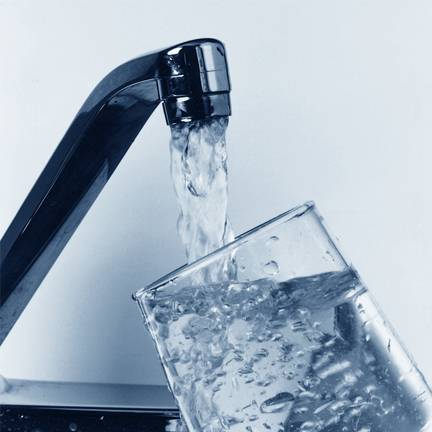
Most contaminants can be removed from drinking water through reverse osmosis. This is a process of passing water under pressure through a semi-permeable membrane to remove the majority of contaminants. This is the most common process of filtering water. Kinetico’s K5 drinking water station, a reverse osmosis system with flex filtration, is certified to remove more contaminants than any other reverse osmosis system on the market.
For any contaminants that cannot be removed through reverse osmosis, or to further combat a specific contaminant, up to 5 filters can be added to the K5. Contact us to learn more.
| Contaminant | Source | Health Effect |
| Aluminum | Rock and Soil Leaching | High risk for dialysis patients |
| Arsenic | Coal Power PlantsPetroleum Production
Natural & Industrial Deposit Leaching Wood Preservatives Pesticides |
Severe skin problemsDisruption to endocrine system Cancer (skin, bladder, lung, kidney, liver, prostate)
Cardiovascular & nervous system damage |
| Barium | Mineral DepositsDrilling Waste Disposal
Copper Smelting Motor Vehicle Parts Manufacturing |
Breathing problemsIncreased blood pressure
Changes in heart rhythm Stomach irritation Brain swelling Muscle weakness Damage to liver, kidney, heart & spleen |
| Cadmium | Galvanized Pipe CorrosionNatural Deposit Erosion
Metal Refinery Discharge Waste Battery & Paint runoff |
Nausea, vomiting, diarrhea, muscle cramps, sensory disturbances, liver injury, shock & renal failureLong term: kidney, liver, bone & blood damage |
| Chloramine | Municipal Treatment | When present in dialysis water, can cause hemolytic anemia |
| Chromium | Trivalent chromium is naturally occurringHexavalent chromium is a byproduct of some chemical processes | Nausea, gastrointestinal distress, stomach ulcers, skin ulcers & allergic reactionsKidney & liver damage
Reproductive problems Pulmonary & nasal cancers |
| Copper | Industrial DischargesCopper salts for reservoir algae control
Copper Plumbing Corrosion |
Nausea, vomiting, diarrhea, gastrointestinal illness & abdominal & muscle painAnemia, liver poisoning & kidney failure |
| Fluoride | Natural DepositsTreated Municipal Water | Long term consumption can cause:Skeletal fluorosis (extremely dense & hard bones that are abnormally fragile)
Disfiguration, pitting & mottling (discoloration) of teeth in children less than 9 years old |
| Lead | Mostly Lead Service LinesLead Containing Solder
Brass Fittings Industrial Processes Mines Smelting |
Lower intelligenceHearing impairment
Growth impediment Damage to brain, kidneys, bone marrow, nervous system & red blood cells |
| Nitrates/Nitrites | Human SewageLivestock Manure | Methemoglobinemia (blue baby syndrome) |
| Mercury | Sport FishNatural De-Gassing of Earth’s Crust
Fossil Fuel Combustion Mercurous & Mercuric Salts (from skin & antiseptic creams, ointments) |
Kidney damage |
| Perchlorate | FireworksExplosives
Rocket Propellants Naturally occurring in low levels |
Hinders absorption of iodine by thyroid glands, leading to developmental and learning disabilities in children. |
| Radium | Radioactive decay of uranium & thorium in rocks & soil | Increased risk of cancer |
| Selenium | Natural DepositsCopper Smelting | Hair and fingernail changesFatigue and irritability
Damage to peripheral nervous system |
| Silver | Primarily from use as a bacteriostat in water treatment devicesNaturally occurring in soil as insoluble silver chloride and silver sulfide | Argyria (discoloration of skin, hair & organs) |
| Uranium | Naturally Occurring Mineral | Increased risk of cancerKidney toxicity |



